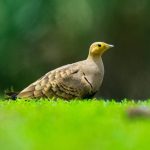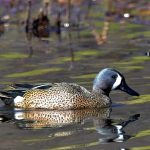Common Name: Kalij Pheasant
Scientific Name: Lophura leucomelanos| Size | Diet | Range in Hawaii | Status in Hawaii |
|---|---|---|---|
| 18 in. - 32 in. | Seeds, plants, fruit, insects, worms and small animals | Hawaii (Big Island) Mauna Loa, Hualalai, and Mauna Kea. | Least Concern |
The Kalij pheasant is one of several species of pheasants that you can find in Hawaii. It’s one of the most beautiful birds in the state, with iridescent, colorful feathers, and is frequently kept for this reason. They are indigenous to India, Nepal, and Pakistan, but have been introduced to Hawaii as game birds.
As a result, there is still a lot to learn about the nature of the Kalij pheasant in the state, and if you are here to learn everything about them, this article is for you.
Kalij pheasant
Scientific Name: Lophura leucomelanos
Appearance
The Kalij Pheasant is a large game bird found in Hawaii that ranges in size from 18 to 32 inches. This species has a crest on their heads that consists of white to gray-brown feathers. The males are usually iridescent bluish-black in color, while the females are grayish-brown.
The color that surrounds the eyes of males and females can also be used to distinguish them from one another. Males have bright red coloring around their eyes, whereas females only have their plain color.
Diet
The Kalij pheasant’s diet is relatively diverse. The bird feeds on insects and small animals, as well as plant matter. It also consumes seeds, nuts, and grains when they’re available.
The diet of the Kalij pheasant is fairly consistent throughout the year; however, it’ll consume more insects during the months when they’re more nutritious and plentiful.
The Kalij pheasant has been observed eating termites and small snakes. These insects are common in the area where this bird lives and can be easily found by foraging on the roadside, forest, and field edges in the early morning and late afternoon.
Behavioral traits
In Hawaii, kalij pheasants forage in small groups of 6-7 birds. This is because they’re social animals who need to communicate with one another in order to find the best places to forage for food.
These birds are made up of one female and one to six males. Cooperative defense behaviors were also observed in males, while cooperative parenting behaviors were observed in both males and females.
Dogs, feral cats, Barn Owls, Hawaiian Short-eared Owls, mongooses, and Hawaiian Hawks are among their predators. The group and the other males are led by one dominant male, usually the oldest. The next oldest male will take his place if the dominant male disappears.
They have a reputation for acting aggressively toward other males who approach their nest and aren’t a part of their social group.
Breeding
Males of this species begin courting females in April. Male kalij pheasants will perform elaborate dances and displays to attract a mate.
They do this by flapping their half-open wings and spreading their tails to enhance their plumage pattern. Their crest is also raised, and calls are usually heard during this ritual.
The nesting period can last until July, when the eggs hatch after 25 days. They remain in the group until they reach sexual maturity before the start of the next breeding season. During this season, the females will begin to leave their group in search of another one, while the males will stay put.
Habitat
The Kalij Pheasant lives in forests and fields at high elevations ranging from 1000′ to 7500′ above sea level. They prefer areas with dense undergrowth and new vegetation. Since this species lays its eggs on the ground, hidden in the undergrowth, it needs to live in areas with plenty of grass for them to hide in during incubation.
Native
The kalij pheasant is a South and Southeast Asian bird. It’s found in Pakistan, India, Nepal, and western Thailand. This small bird is believed to have originated in the Himalayas and now ranges from Pakistan to western Thailand. Although it can survive in tropical and subtropical climates, it prefers the high altitudes and moist environments of these countries.
Hawaii
This large and colorful pheasant was one of the birds introduced to the Hawaiian islands as a game bird in 1962. The owners of Puuwaawaa Ranch first brought them to the Puu Waawaa area.
Since then, they’ve been successful in surviving in and inhabiting the high-elevation forests on the Big Island, Maui, and Oahu. They feed on the fruits of Banana poka, strawberry guava, and clidemia in these areas.
Conservation Status
Despite the decline of some of its subspecies, the IUCN classifies the kalij pheasant as least concern. This means they’re still widespread and aren’t on the verge of becoming critically endangered or extinct. They’re common in their native range and in Hawaii, where they have been introduced as game birds.
Interesting facts
1. These species have calls similar to a guinea pig
The call of the Kalij pheasant sounds like a tiny guinea pig. This species is usually heard at dawn and dusk, releasing a high-pitched whistling chuckle or chirrup. They utter a rapid koorchi koorchi or whoop-keet-keet when alarmed.
2. Their lifespan is 10-15 years
A kalij pheasant has an average lifespan of ten years, but if properly cared for and kept in the best conditions possible, it can live up to fifteen years.
3. There are nine known subspecies of Kalij pheasant
There are nine known subspecies of Kalij pheasant, including the white-crested kalij pheasant, black-backed kalij pheasant, black kalij pheasant, Horsfield’s pheasant, Williams’ kalij pheasant, Oates’ kalij pheasant, Crawfurd’s pheasant, lineated pheasant and the L. l. leucomelanos found in the forests of Nepal.
4. They’re terrestrial birds
Kalij pheasants are terrestrial birds, meaning they spend the majority of their time on the ground. However, they can fly if frightened.
In fact, these birds are fast runners who prefer to run away from predators rather than fly away. They roost in trees at night to avoid predation by nocturnal predators.
5. In a group, food provisioning is done by both males and females
When male and female Kalij pheasants are in a group with chicks, they make “food calls” to let the chicks know they have food to share. This is done by pointing their beaks at the foods or directly picking them up to feed them.
Frequently asked questions:
-
What do Kalij pheasants eat?
The Kalij pheasant is an omnivore, which means it eats both animals and plants. It has been observed eating seeds, grains, termites, and small snakes.
-
Is Kalij pheasant endangered?
The International Union for Conservation of Nature (IUCN) has classified Kalij pheasants as least concern.
Featured image: Image credit: Mprasannak via Wikimedia Commons






